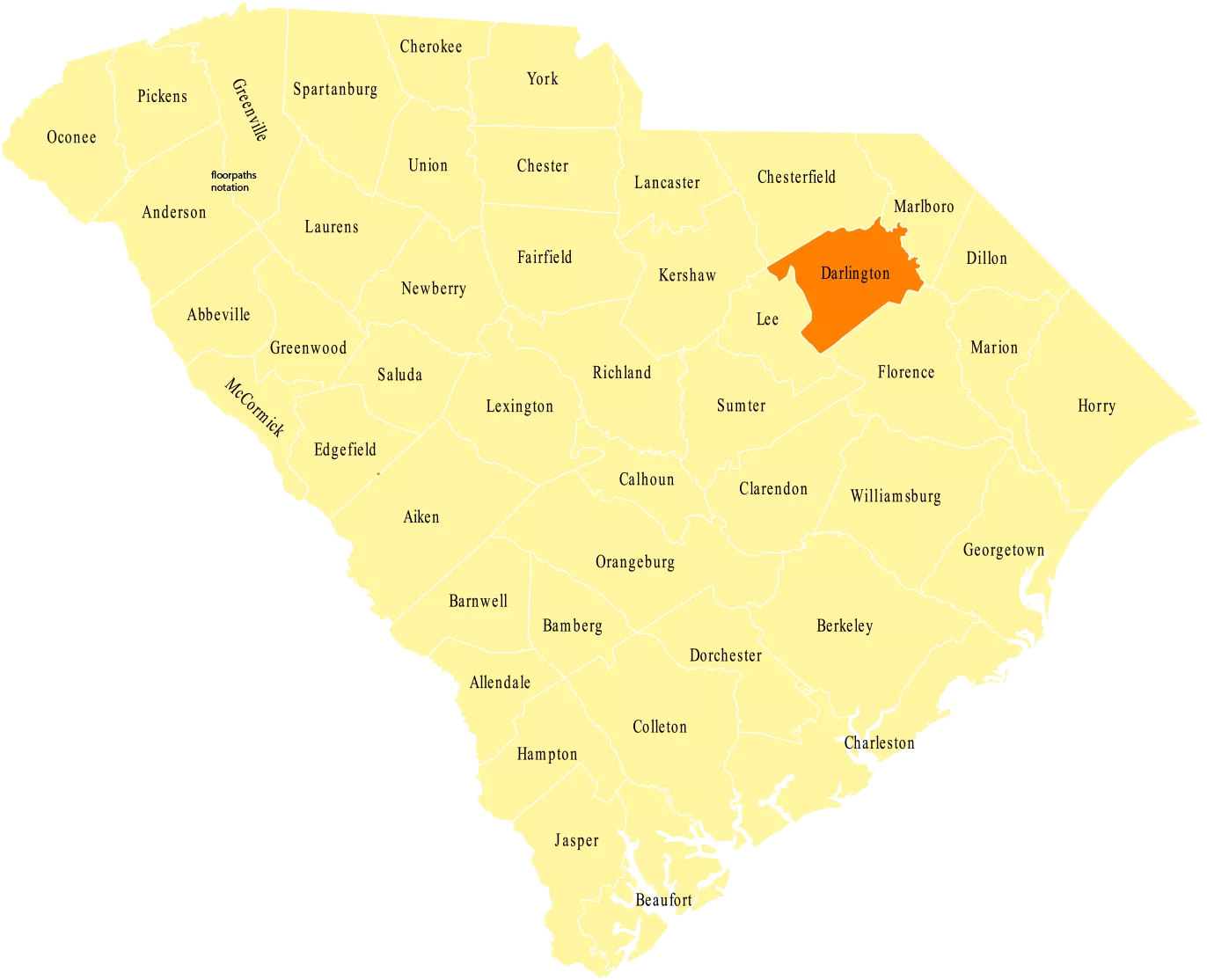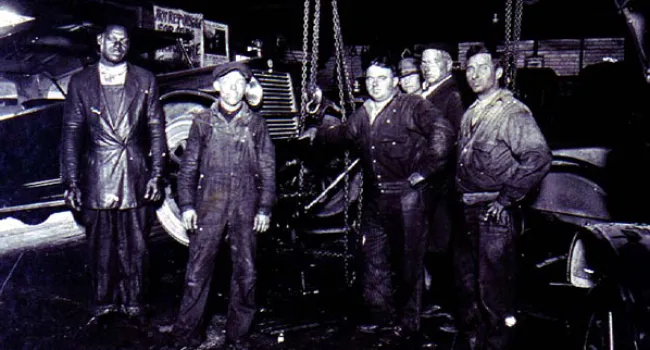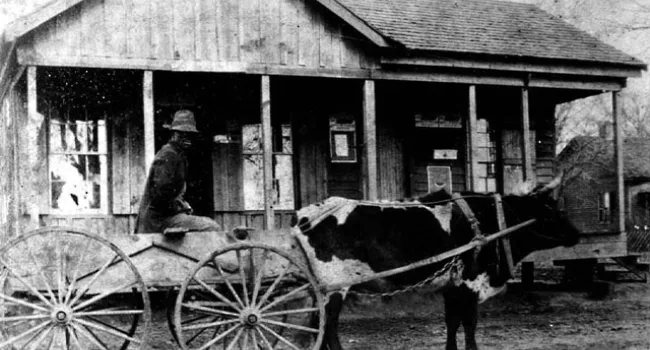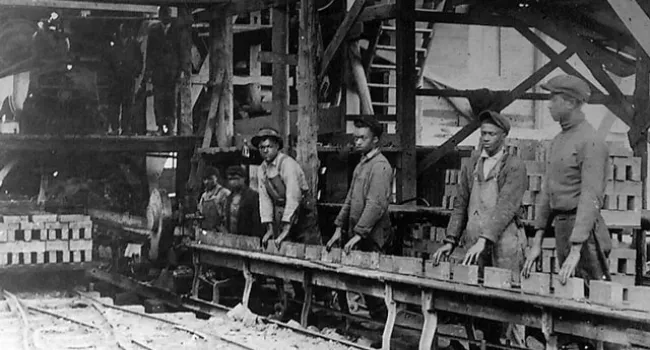
Photo
The Owen-Woodward company was the second drive-in gas station in Darlington. Its signs advertise its many automotive services: "Gas, Oil, Tires and Accessories." The caption on the photograph...
Part of the Pee Dee region of South Carolina, Darlington County got its start when Welsh Baptists settled in the area and began to farm indigo, flax and other crops along the Welsh Neck of the Pee Dee River. These early settlers resulted in a strong Baptist presence, and the first non-Baptist place of worship did not exist in Darlington County until the late 18th century.
Initially part of the Cheraws District, Darlington became its own district in 1789. In 1868, Darlington District became Darlington County, but in the late 19th and early 20th centuries, the county lost about third of its size to the creation of Florence and Lee counties. Darlington serves as the county seat. Though no one is certain on the reason for the name Darlington, it is thought to be a reference to Darlington, England.
Historically, cotton farming and railroads contributed most to the county’s economy. Agriculture has remained important in Darlington County, although cotton farming has given way to the farming of other crops, such as tobacco. The county is principally known for Darlington Raceway, which is an important venue for stock car racing.
County History. Accessed June 02, 2016. http://www.darcosc.com/residents/county_history.php

Photo
The Owen-Woodward company was the second drive-in gas station in Darlington. Its signs advertise its many automotive services: "Gas, Oil, Tires and Accessories." The caption on the photograph...
Photo
Chandler and Drake Auto Repair Shop in 1924; the third man from the left is F.W. Drake. Courtesy of the Darlington County Historical Commission.
Photo
A farmer driving an ox-cart was a common sight in South Carolina until well into the 20th century. Courtesy of the Darlington County Historical Commission.
Photo
These two boys wait patiently in the wagon that will take the family's purchases home. Their wagon is parked on the street in front of Welling and Bennoit Hardware in Darlington around 1900. Courtesy...
Photo
The Southerner on Pearl Street in Darlington is an example of the beginning of modern drive-in fast food businesses in South Carolina, photographed around 1958. Courtesy of the Darlington County...
Photo
The production line at Darlington Brick Company in Society Hill, around 1912. Courtesy of the Darlington County Historical Commission.
Photo
Interior of the Darlington County Bank and Trust in 1947. Courtesy of the Darlington County Historical Commission.
Photo
One of the final steps of textile manufacture is printing the design on the cloth. Here a worker in Hartsville prints cotton cloth during the 1930s. Works Progress Administration file photo. Courtesy...
Photo
Interior of a tobacco grading room in a Darlington tobacco factory around 1890. Photo by August Kohn. Courtesy of the South Caroliniana Library.
Photo
This cotton market in Hartsville, in Darlington County, dealt primarily in long-staple cotton, used in the 1930s in fine yarns, and in the fabric or cords on which tires were built. Works Progress...